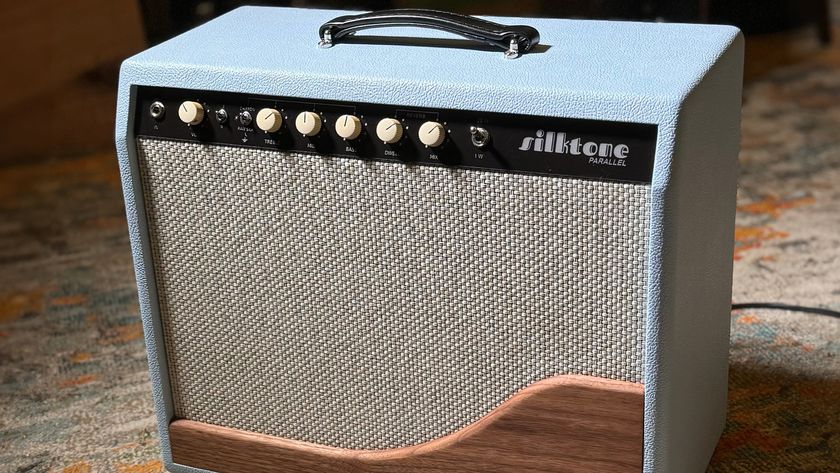The history of Martin's earliest acoustic guitar designs, from the 1800s to the early 1900s
Historic hardware: Martin & Co’s museum and archives specialist Jason Ahner guides us through some pivotal 19th and 20th-century Martins
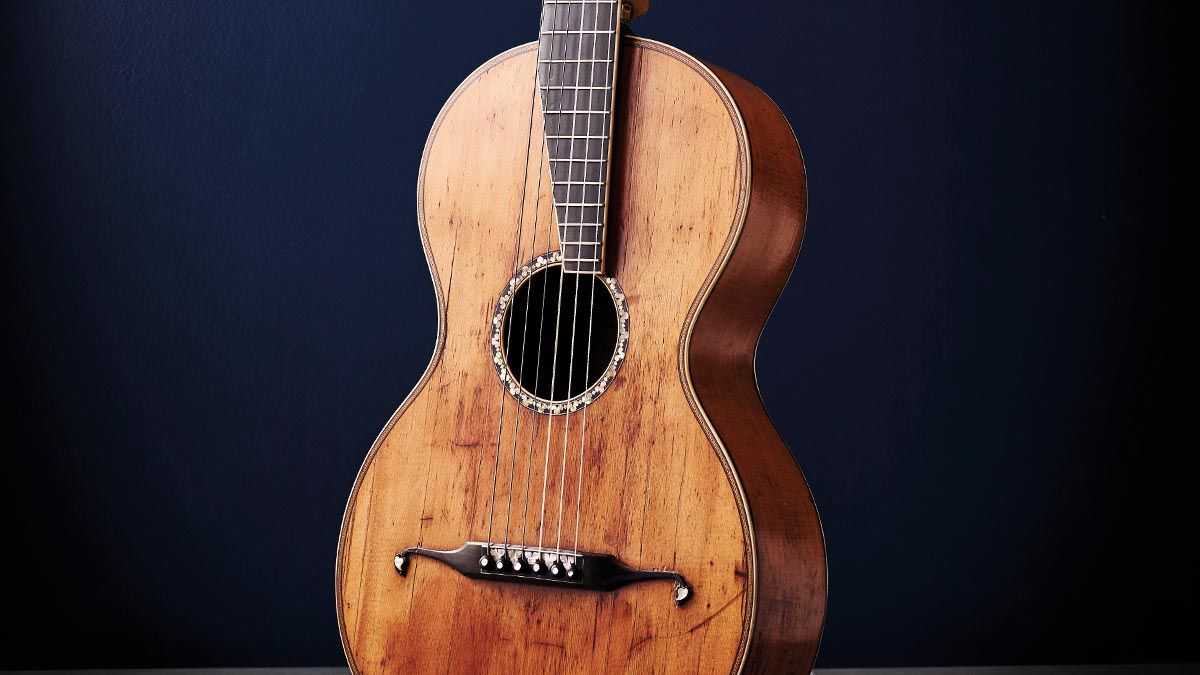
The X-braced, steel-string, 14-fret neck, large-bodied American flat-top is an icon of modern times. It is the people’s guitar – the genre-spanning voice of generations.
But it took many years of experimentation and ingenuity before Martin finally evolved the instrument in the late 1920s and 30s into what many consider to be the pinnacle of acoustic guitar building.
For that reason, the basic design hasn’t changed much since then. Indeed, there has long been a common emphasis on looking back to the pre-war period of production as a benchmark for quality.
Imagine being in a boat on the Atlantic Ocean for two months! But right away, CF Sr went to work building guitars
The story of Martin guitars begins in 1796 with the birth of company founder Christian Frederick Martin Sr in Markneukirchen, Germany.
Around this time, the instrument as we know it today with six single strings was just becoming established in Europe as luthiers increasingly shifted away from building the earlier-style double course-stringed baroque guitars during the latter half of the 18th century.
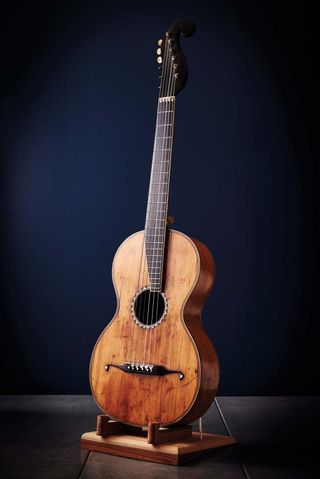
“When CF Martin Sr was born, the six-string guitar was a rather new development,” CF Martin & Co’s museum and archives specialist, Jason Ahner, tells us. “At some point in the 1700s, they figured the guitar should have six strings and the idea eventually stuck.
“CF Sr’s grandfather and great-grandfather were violin builders. We don’t know why his father never got into that, but he was a cabinet maker and part of the cabinet maker’s guild.
Get The Pick Newsletter
All the latest guitar news, interviews, lessons, reviews, deals and more, direct to your inbox!
The idea was that CF Sr would set up shop building guitars in Germany and they would live happily ever after. But there was a constant battle with the violin makers guild who claimed they had the sole right to build any stringed instrument
“He also built guitars and he saw that his son had an interest in building guitars, so he approached the violin makers to see if Christian could apprentice under them, but they declined saying they thought the guitar was a passing fad.
“That’s when his father arranged the apprenticeship with [renowned Viennese guitar builder] Johann Stauffer. As the story goes, CF Martin Sr travelled to Vienna to get his formal apprenticeship under Stauffer when he was 15 years old. He eventually became the foreman of Stauffer’s shop.”
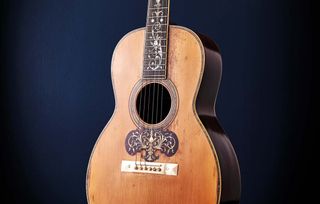
While in Vienna, CF Martin Sr married singer and harp teacher Ottilie Kuhle, and the pair relocated to Germany soon after their first child, Christian Frederick Martin Jr, arrived in 1825.
“He decided to move back to Germany,” continues Jason. “I guess the idea was that CF Sr would set up shop building guitars there and they would live happily ever after. But there was a constant battle with the violin makers guild who claimed they had the sole right to build any stringed instrument.
“These battles went on for a few years and the court sided with CF Sr every time because there was no mention of the guitar in the guild articles. Plus, the guitars Christian was building were the best they’d ever seen.
“When his father passed away, however, he decided he’d had enough. He wanted a new opportunity.” Setting his sights on the Land of Opportunity, CF Martin Sr gathered up his young family and boarded a US-bound ship on 9 September 1833.
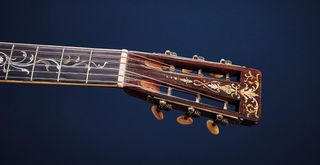
“They left Germany and arrived in New York City on 6 November,” recounts Jason. “Imagine being in a boat on the Atlantic Ocean for two months! But right away, CF Sr went to work building guitars. For the first six years, they were in Lower Manhattan on Hudson Street.
“I guess the shop officially opened in May 1834. That’s when you first see the label that’s in this Stauffer-style guitar. That is the earliest known label. This is the earliest-known Martin to exist.
“We just refer to it as ‘the oldest Martin’ or ‘the Stauffer Martin’, even though we have quite a few guitars with the Stauffer-style Viennese scroll headstock. It’s a shorter-scale gut-string, and is very lightly built. It has a sweet, mellow sound. The great thing about this guitar is that it’s still very playable. Even 186 years later! It’s very similar to a Legnani model that Stauffer built.
The great thing about this guitar is that it’s still very playable. Even 186 years later!
“Luigi Legnani was a famous Italian guitarist and Stauffer built instruments for him. Stauffer was the one to patent that scroll-shaped headstock and the clock key adjustment in the neck. Paul Bigsby and Leo Fender later used that style of headstock on their solidbodies and a lot of people think that’s where they got the idea from.
“The features on this guitar are very similar to what CF Sr would have built in Vienna. A lot of his guitars had the same type of headstock and neck construction with the clock key adjustment in the neck. It’s kind of like an early truss rod; it raises or lowers the neck and adjusts the height of the strings.
“The moustache bridge is another Viennese build aspect. Ebony bridges – and fingerboards – were standard for Martin from the beginning. It has mother-of-pearl inlays on the edges, the little heart inlays, and just above the bridge pins. Then you have the mother-of-pearl [soundhole] rosette. There are also mother-of-pearl inlays just in front of the nut. It’s an ivory nut.
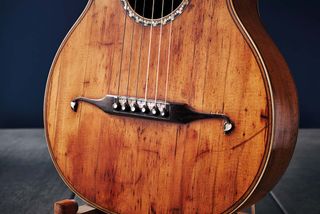
“The saddle is fretwire, so it’s nickel silver. That was common on a lot of early guitars. The maple neck is stained black and it has ivory strips inlaid into it, and the neck and body are bound in ivory. That wouldn’t be acceptable now! And, of course, the top has the marquetry that Martin has been known for down the years.
“CF Sr would have done those inlays himself. It always blows me away to think he built these guitars so perfectly without any powered equipment – everything was cut and routed by hand.”
As per the majority of Austrian and German guitars built during this time, the back and sides of the earliest Martin are constructed of maple in the tradition of violin makers. In New York City, however, CF Sr would soon get to grips with Spanish-style rosewood guitars as he routinely repaired cracked instruments that had fallen foul of the cold, dry north-east US winter.
CF Sr would have done those inlays himself. It always blows me away to think he built these guitars so perfectly without any powered equipment – everything was cut and routed by hand
“CF Sr was probably getting a lot of Cádiz guitars coming through his shop, so he could see how popular these Spanish models were,” reasons Jason. “You see his designs evolve away from what he was building in Vienna and Germany to more of a Spanish-influenced guitar. Eventually he would get to know [Spanish guitarist] Madame de Goñi, but at that point it was quite a localised East Coast market.
“During this period, he was building a lot with Henry Schatz, a friend from Germany who had come over to the United States in 1832. He was the influence behind Martin moving to the Nazareth area [in Pennsylvania]. CF Sr had thought about going back to Germany, but after his wife went to visit the Schatz family just north of Nazareth, they decided to move to Cherry Hill [in Pennsylvania].
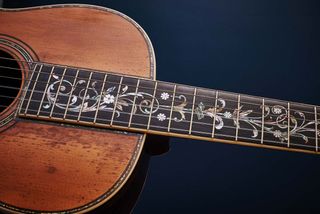
“Most of the guitars CF Sr built in New York City have the Stauffer headstock and figure-of-eight body shape, but in the late-1830s, you start to see the Spanish influence. That’s when he starts building guitars with square tapered headstocks and bodies with a narrower upper bout.
“Eventually, he came up with the pyramid bridge and then used that almost exclusively. I think he got the basic idea from the rectangular bridges on Spanish guitars, but the pyramid bridge and the later belly bridge [from 1929] are both styles that Martin came up with.”
Spanish guitars use a tie block bridge but CF Sr wanted to stick with pin bridges because he liked the design. The problem was he would hit the fan braces when he was drilling the pin holes
As CF Sr continued to explore the Spanish style of guitar building, he began using the typical fan bracing, although soon discovered it was incompatible with Stauffer-style pin bridges.
“Spanish guitars use a tie block bridge,” Jason points out, “but CF Sr wanted to stick with pin bridges because he liked the design. The problem was he would hit the fan braces when he was drilling the pin holes, so he started trying different things.
“In the late 1830s and early 1840s, you see variations between fan bracing and traverse tone bars, and then a kind of X-brace system. Finally, in 1843, you get the Madame de Goñi guitar – the first X-braced Martin. It’s kind of like a double ‘X’, which is a little different to the ‘mature X-bracing’ we use now.
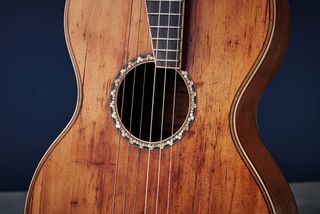
“He first started using that a little later in the 1850s. Madame de Goñi was probably the most prominent guitar player in the US during that time, and her [size 1] guitar was the largest model Martin were building back then. After he built that guitar, he started building larger models like it regularly.
“His dealers at the time just began ordering ‘the de Goñi model’. They’d say, ’I want a size 1 de Goñi’. In a way, Madame de Goñi was Martin’s first signature artist!” With greater perceived volume and low-end power, the demand for larger-bodied guitars continued.
By 1902, guitar players wanted to join in with mandolin and banjo clubs, so they needed more volume and, therefore, larger instruments
“You see the first 0 size in the sales ledgers in 1854, followed by the first 00 size in 1858,” highlights Jason. “After that, Martin didn’t build anything larger until 1902 when you see the first 000 size – a 000-21. By that stage, guitar players wanted to join in with mandolin and banjo clubs, so they needed more volume and, therefore, larger instruments.
“Martin started building mandolins in 1895 and the intricately inlaid style of the 6 and 7 models then crossed over to guitars in the late 1890s. Before that, Martin were really conservative with their inlays.
“Even the style 42 – which was Martin’s top-of-the-line until 1904 when the first style 45 was offered – only had position markers at the 5th, 7th and 9th frets. The guitar pictured is a late-1901 00-42S. It’s a transition model between the style 42 and what would soon become the style 45. Back then, the ‘S’ just meant ‘special’. It was kind of like their custom shop at the time. “
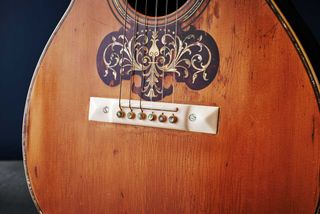
“It has an ivory bridge, which is something you would see on styles 34 and above up until the late 1910s when Martin stopped using ivory for bridges and binding. I believe the pearl-inlaid tuning machines on this guitar are also ivory, as is the binding on the body and neck.
“There’s some gold inlay on the headplate, but for models like this, Martin didn’t do the inlay on the headplate, fingerboard or pickguard; there was a shop in New York City they would order these from. It’s got an Adirondack spruce top, Brazilian rosewood back and sides, and a two-piece cedar neck.
“The headstock was grafted to the barrel, which is where the carved diamond volute comes from on style 28 guitars and above. This one is another gut-string model, so you’re not going to get the projection you do from steel strings, but it has a really great sound.”
Steel strings came from Hawaiian music and Hawaiian music was king in the 1920s
After its first steel-string model appeared in 1902 (a special order 00-21), Martin began offering steel-string guitars in the 1910s when Hawaiian music was popular, and in 1922 the first production model to be offered with steel strings only – the 2-17 – appeared.
“Steel strings came from Hawaiian music and Hawaiian music was king in the 1920s,” emphasises Jason. “That’s when you see steel-string guitars start to cross over to other genres of music like early blues and country.
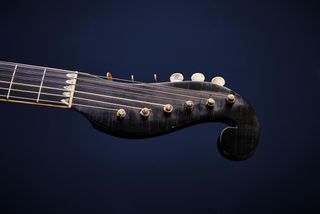
Around 1927, Martin started offering steel strings as standard and gut strings as special order instead. Hawaiian music changed everything because they needed even more volume.
That’s where you see the Dreadnought eventually come in. Martin built the model for [Hawaiian musician] Mekia Kealaka‘i and then they built the Dreadnought for Ditson based on that in 1916.
“But the Dreadnought really comes into its own in 1934 – that’s when you see the first 14-fret neck Dreadnoughts appear. The 1929 OM-28 was the first 14-fret neck Martin guitar, and a lot of people consider that to be the first modern flat-top acoustic guitar,” Jason tells us.
“The most expensive Martin vintage guitars are from the prewar period, because by that point they’re modern acoustic guitars. The 14-fret steel-string guitars are the most valuable models because they’re functional and popular in music today. If you show up on stage with a Stauffer Martin, it’s not quite the same!”
Rod Brakes is a music journalist with an expertise in guitars. Having spent many years at the coalface as a guitar dealer and tech, Rod's more recent work as a writer covering artists, industry pros and gear includes contributions for leading publications and websites such as Guitarist, Total Guitar, Guitar World, Guitar Player and MusicRadar in addition to specialist music books, blogs and social media. He is also a lifelong musician.
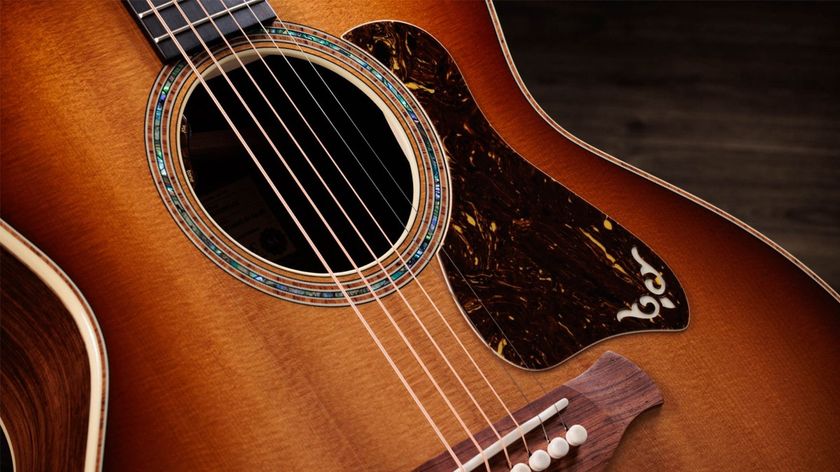
“An investment-grade, pro-quality guitar that will provide decades of playing enjoyment before it becomes a treasured family heirloom”: Taylor Gold Label 814e SB review
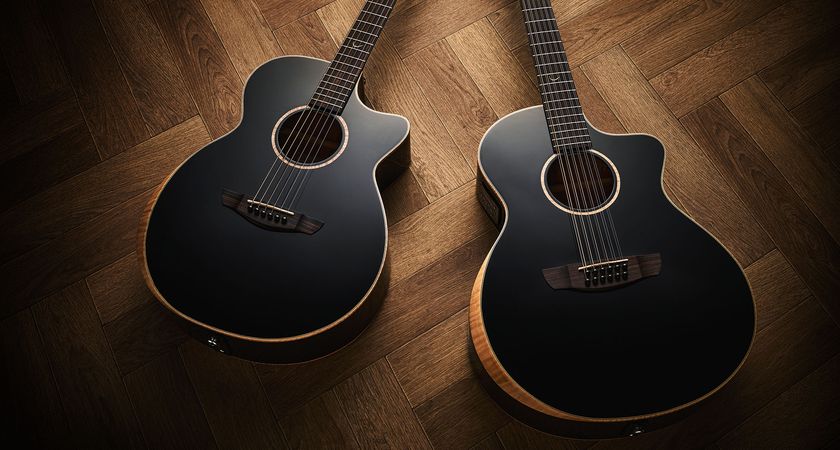
“The tuning did not need tweaking for the entire time we spent trying to avoid playing Stairway To Heaven”: Faith Eclipse Venus E/Cutaway & Neptune E/Cutaway 12-String review









